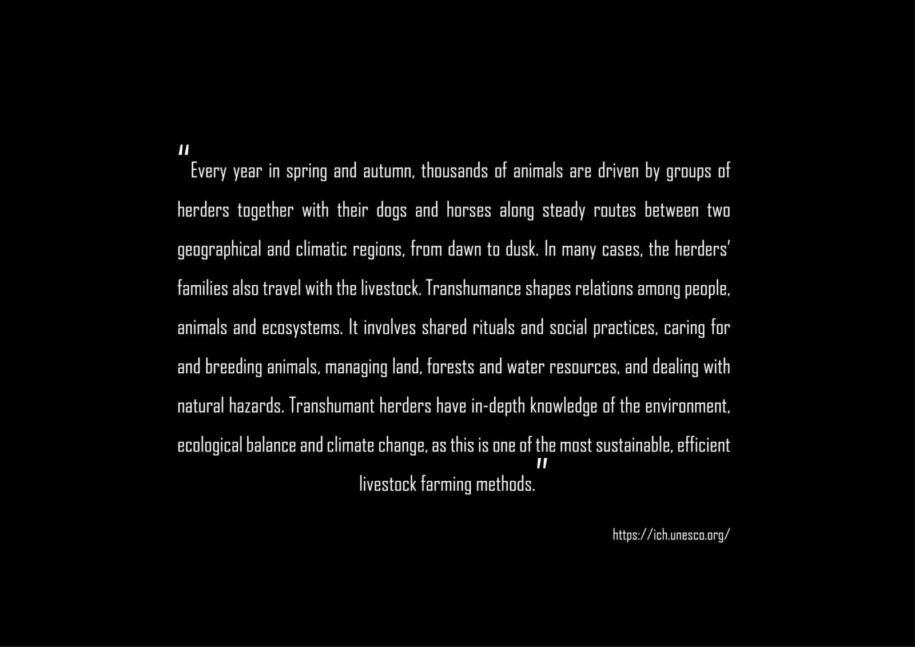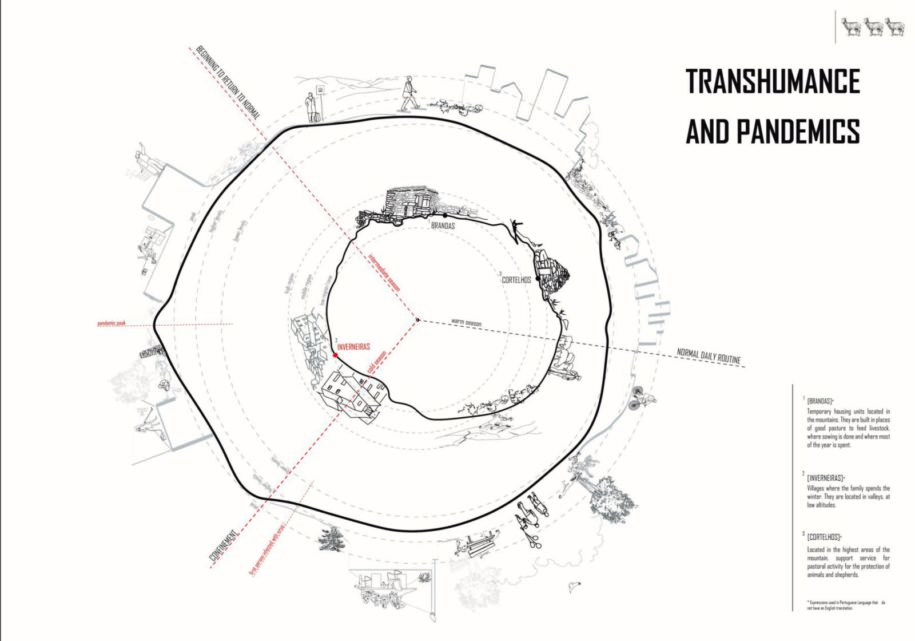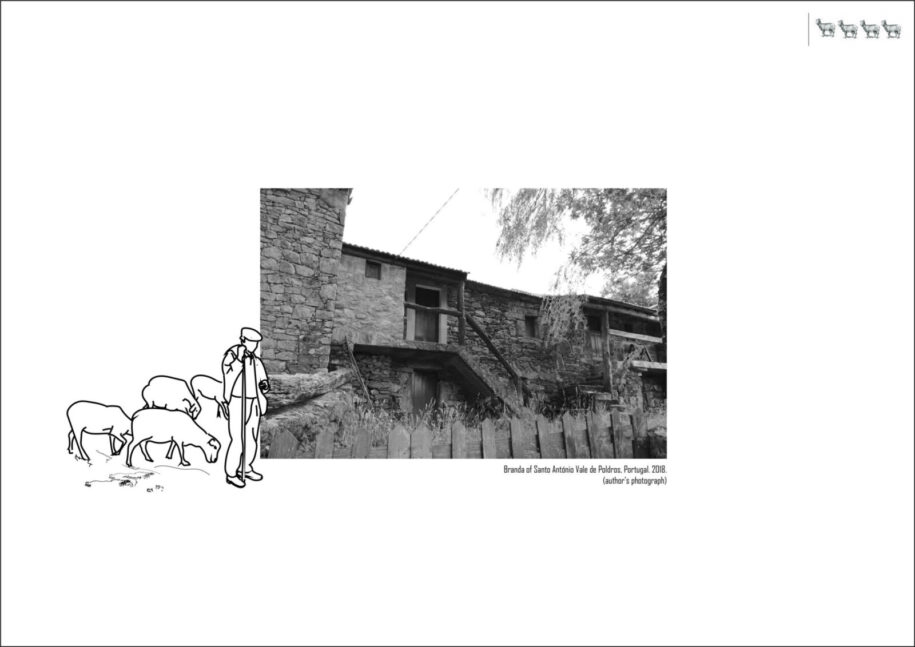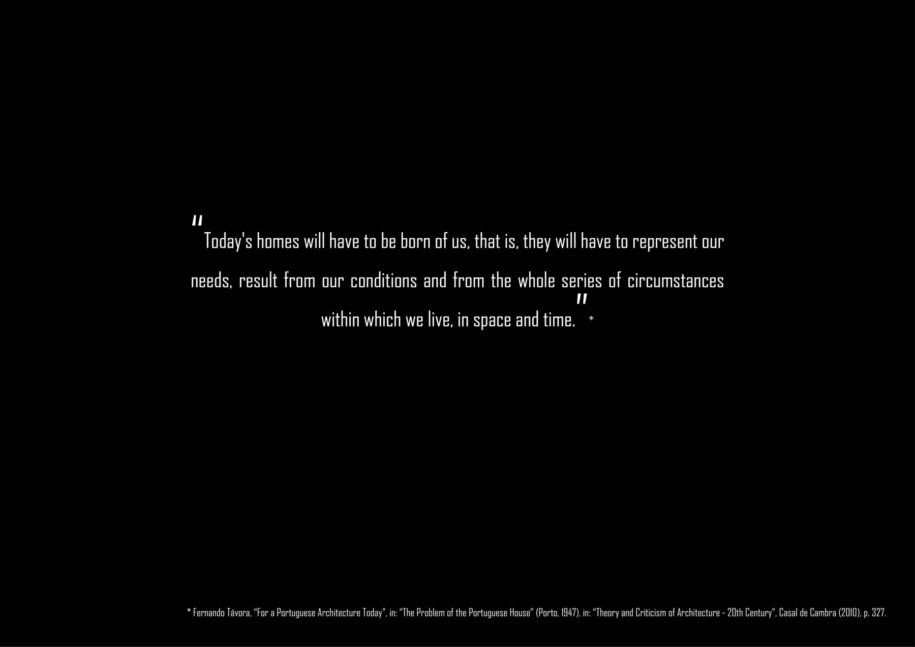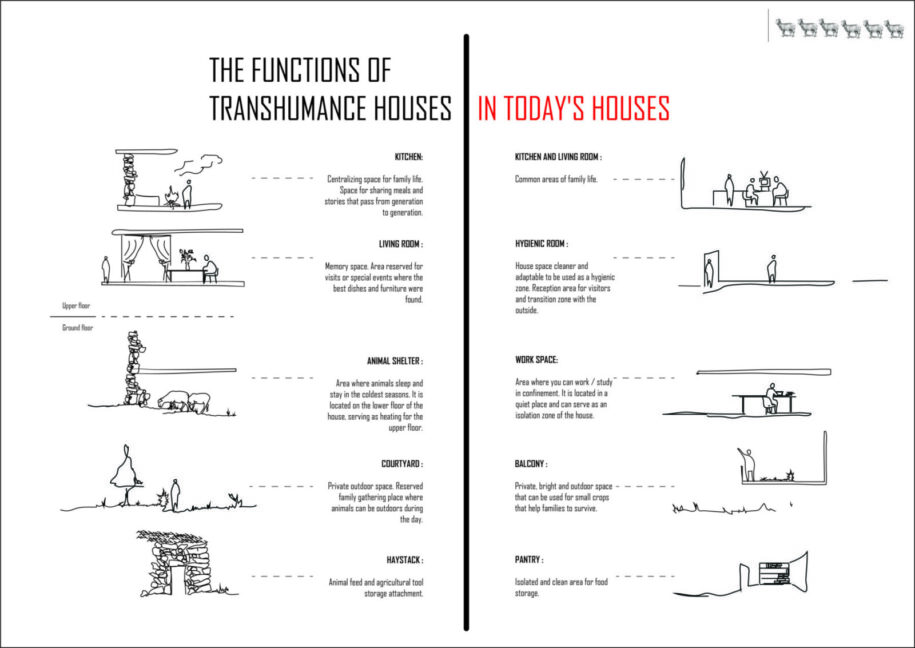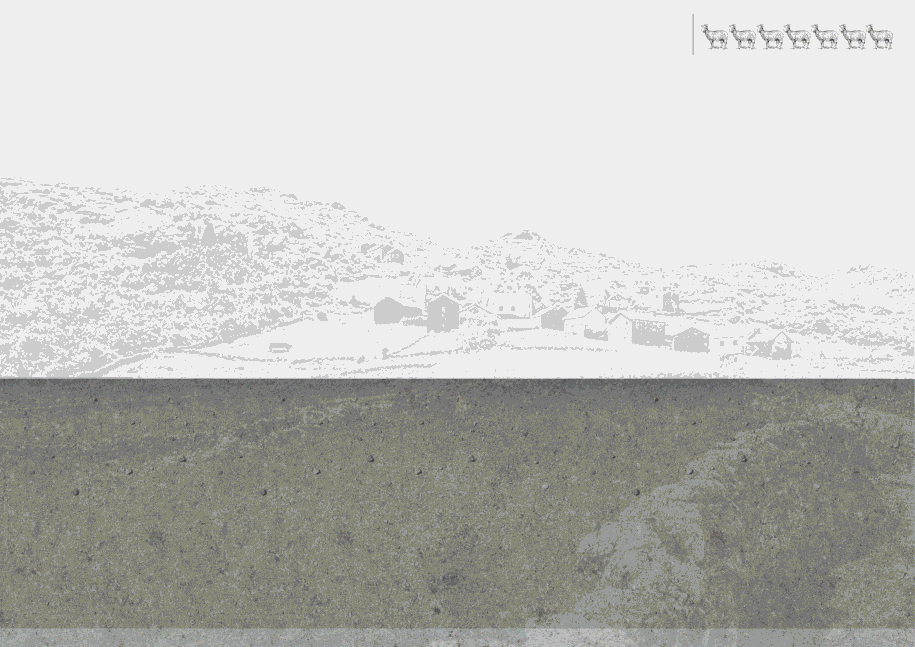Pandemic Architecture, an International Ideas Competition curated by the Design Ambassador for ARCHISEARCH.gr, invited the creative community to open up a dialogue and create a think tank, looking for ideas from the architectural and design community about the future of the living, the workspace, the public space and the tourism industry after the outbreak of Covid-19.
Sheep in a Pandemic World was longlisted in top 100 out of 440 projects.
-text by the authors
The way of life and the appropriation of space and rural territory by ancient peoples served as an inspiration for the development of ideas on how we should and must face the reality of constant pandemic outbreaks and how the thinking of architecture can be our greatest asset.
Against the background of the possibility of outbreaks, such as Covid-19, recurring each year, it is necessary to find ways of adapting and rapidly mobilizing to halt the spread of viruses, control the health sector and stabilize the economy.
With the advancement of technological means it is possible to keep a large number of people in confinement and working from home, but the current design of the dwellings still places some limitations so that peaceful coexistence by all inhabitants is possible and safe. However, the advance of technologies also makes us look back and realize different ways of interpreting territory and the house that can help us through this adaptation.
Therefore, we study and compare the strategies that shepherds used to achieve, on the one hand, to protect their animals and, on the other hand, to give them the best food that would ensure their livelihood, always taking care with the excessive exploitation of resources.
TRANSHUMANCE. This practice consists of the seasonal movement of the shepherds along with their animals and belongings. In summer they move to the top of the mountains, where there are more green pastures and in Winter they return to the villages next to the plains, fleeing the rigor of the cold of the mountains.
This annual turnover developed different ways of designing the space, having created various types of housing according to its geographic location. The relationship that animals had with the house and its importance in the survival of the rural population produces a confrontation with the relevance of maintaining work and the functioning of the economy in the midst of a public health crisis.
This idea of annual rotation serves as an object for comparing transhumance with the confinement required by outbreaks.
Protecting animals in winter will be the same as protecting the population in their homes as soon as a virus is suspected. The configuration and prominence that the animal shelter has in the general panorama of housing and the relationship that these populations had with the environment and the territory must be taken into account for a current house that can allow the performance of a profession during the time of confinement and a more sustainable way of living the cities in harmony with nature.
This analogy is not meant to be used as a solution because there will never be anything completely effective to protect against a disease in the global scales, but rather as an idea of how to look at our ancestors, we can learn lessons and reinterpret the way people live in houses and contemporary cities.
Facts & Credits
Participants Maria Araújo, Alexandra Gama, Paula Martins
Country Portugal
The project was longlisted in top 100 out of 440 projects.
The impact of Pandemic Architecture competition on the international architectural community was astonishing, with the number of registrations to exceed 800, with the final proposals to exceed 400 and with participants from more than 60 different countries.
Results will be officially announced on the 20th of September.
_________________________________________
Check out the open call and the jury here!
READ ALSO: C-Bloc | Pandemic Architecture Top100
